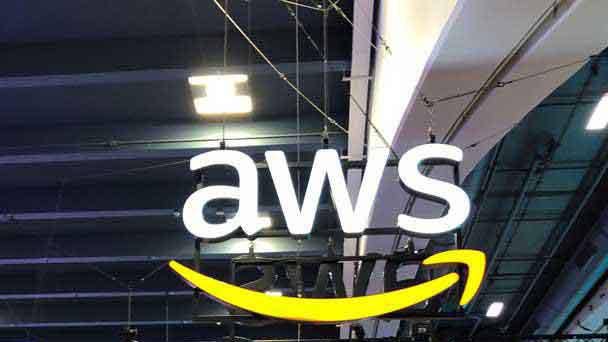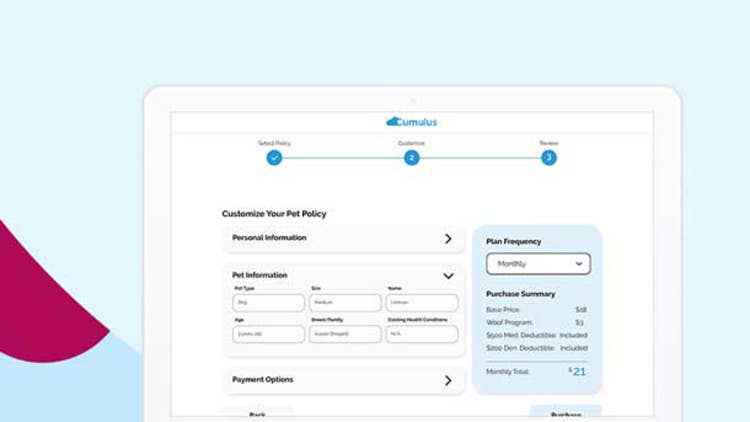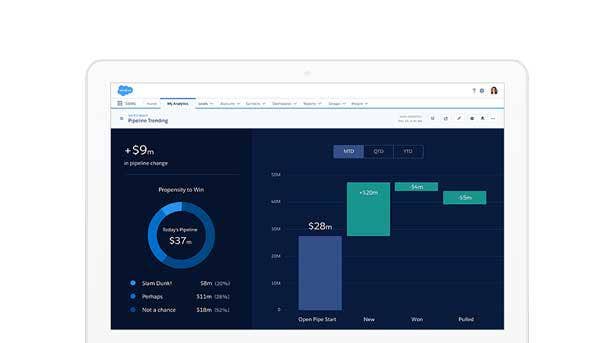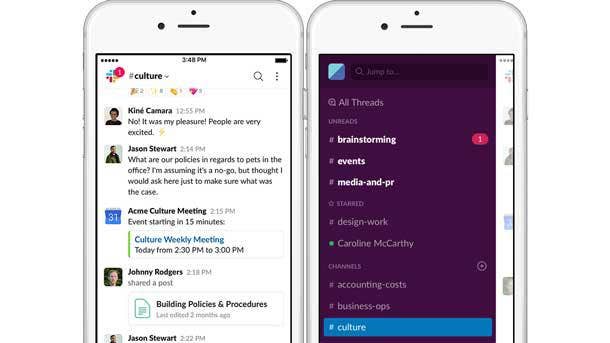The 10 Biggest Salesforce News Stories Of 2021 (So Far)
Salesforce continued to make headlines in the first half of 2021, with the company’s $27.7 billion Slack acquisition and record earnings topping the list of the biggest stories so far this year.

Record-setting earnings, closing its $27.7 billion Slack acquisition and new capabilities across its technology stack and its plethora of subsidiaries — from Digital 360 and Einstein to Tableau and MuleSoft — has made 2021 a standout year so far for software giant Salesforce.
The momentum led to a pronouncement in May by Salesforce CEO Marc Benioff on the company’s quarterly earnings call that the customer relationship management (CRM) tech firm is “about to pass SAP as the largest enterprise applications company in the world” and repeated his expectation of reaching $50 billion in revenue by its fiscal year 2026.
The company’s momentum also has its partners excited for the future, particularly around the Digital 360 solution unveiled last year that combines Salesforce’s Marketing, Commerce and Experience clouds.
“In today’s world, companies cannot survive without a Digital 360 roadmap,” Gerard Szatvanyi, CEO of Quebec-based Salesforce partner OSF Digital told CRN, “which is all about using Salesforce and cloud technologies to become customer-centric while capturing and using data to make smarter decisions.”
Dave Becker, senior alliances manager at Chicago-based Salesforce partner Avionos, said he’s looking forward to learning about how Salesforce will add content management system (CMS) capabilities into Digital 360, allowing organizations to run on one platform and “providing everything from a seamless experience to in-depth analysis of their customers from initial interaction through long-term relationships.”
Here’s where else Salesforce has made headlines this year, so far.

10. Leadership Changes
Earlier this year, Mark Hawkins retired as Salesforce CFO and was succeeded by Amy Weaver, formerly Salesforce’s chief legal officer.
Benioff praised Weaver as a change agent in the company during Salesforce’s May earnings call, saying “she‘s rebuilt this incredible operating margin model and operating model” and “almost redesigning the company from the bottom up.”
“It‘s awesome what she’s been doing,” Benioff said. “And you can see it here. Operating margin in the quarter was a healthy 20.2 percent. You look at the last four quarters … our margin, our revenue, our cash flow — it’s awesome. And to see these changes that Amy has brought to the company has just inspired me.”
In February, Salesforce moved David Schmaier (pictured) to the role of president and chief product officer. He previously held the role of CEO of Salesforce Industries, working on the company’s industry cloud strategy. Schmaier joined Salesforce through the 2020 acquisition of Vlocity for $1.33 billion.
Schmaier was previously an executive at Salesforce archrival Siebel Systems, bought by Oracle in 2006.

9. Investing In Low Code
In June, Salesforce introduced a set of low-code development tools for creating and deploying apps on its platform.
Einstein Data Detect allows organizations to use artificial intelligence and machine learning to find and protect sensitive user data, such as credit card numbers, to make sure the information meets data privacy standards. Customer Identity Plus helps organizations manage a high number of monthly active users’ identities, logins and digital touchpoints. And MuleSoft Composer for Salesforce automates integrations from separate apps and data courses to Salesforce without using code.
Gerard Szatvanyi of OSF Digital told CRN that Salesforce’s investment in automation tools is important. Most companies have difficulty keeping up with modern market demands.
“We cannot train people fast enough, and the sheer amount of data and possibilities is just too much to address without automation,” he said.
Tools unveiled in the summer — but expected to become generally available in 2022 — include a DevOps Center for users to identify work items, integrate source control systems and migrate changes across testing sandboxes to promote development operations practices. Salesforce Functions will allow users to deploy code in a serverless environment for scalable delivery. Dynamic Interactions users can build apps from web components that can communicate, exchange data and react to user actions.

8. Alliance With AWS And Third-Party Integrations
In June, Salesforce and AWS announced an expanded partnership to more tightly integrate their offerings and yield new prebuilt applications that combine AWS’ cloud computing services and Salesforce’s Customer 360 CRM platform.
The goal is to make it easier for developers using both companies’ technologies to build customer business apps, natively use AWS’ compute, storage and database services in Salesforce – along with AWS products such as the Amazon Connect customer contact-center-as-a-service solution — and connect data and workflows.
Salesforce will embed AWS services for voice, video, artificial intelligence (AI), and machine learning (ML) into its new applications for sales, service and industry vertical uses. Customers will be able to buy prebuilt, out-of-the-box solutions from Salesforce and use the integrated AWS services on a pay-as-they-go basis.
Gabriel Romero, AllCloud, called the AWS partnership “the most exciting announcement of the year so far” for Salesforce. The partnership will help AllCloud enterprise clients worldwide connect front and back office operations.
“Working across these two technology powerhouses, AllCloud sees the value of the expanded relationship first hand,” Romero said.
As part of the Digital 360 changes announced in the summer, Salesforce launched a Snapchat Audience Match feature for marketers to create targeted ads in the social media network and a WhatsApp business solution for Marketing Cloud users to reach customers on the messaging app through keyword detection and transactional messages.

7. Big VC Bets
Along with investing in its own technology, Salesforce’s venture capital wing has made some big bets by investing money in startups in security and big data, not to mention a channel partner.
Among the publicly disclosed funding rounds by Salesforce this year, Salesforce participated in a $100 million Series C round in Boston-based big data startup Starburst Data in January.
Two months later, the tech giant led a $120 million-plus round in Israeli cloud security startup Wiz.
In May, Salesforce participated in a $43 million round of funding for partner OSF Digital, a Canadian digital transformation and global commerce products and services provider.
That same month, Salesforce led a $51 million Series B round for Qualified, which offers a conversational sales and marketing platform for Salesforce, according to a statement from Qualified.

6. Record-Setting Earnings
Salesforce’s quarterly earnings reports this year have included new milestones for the company.
In February, Benioff (pictured) called the company’s $5.82 billion in fourth quarter sales and $21.25 billion in fiscal year 2021 sales “a record quarter and year,” according to a statement from the time. The fourth fiscal quarter and fiscal year 2021 ended for Salesforce on Jan. 31.
Meanwhile, in March, Salesforce subsidiary Slack also reported a “record setting year,” CEO and co-founder Stewart Butterfield said in a statement at the time. Slack’s fiscal year also ended on Jan. 31.
The company crossed $1 billion in revenue run rate and added 14,000 new paid customers in the fourth quarter, up from 5,000 during the fourth quarter of fiscal year 2020.
At the company’s earnings call in May for the first quarter of fiscal year 2022, Benioff said Salesforce had the best first quarter in company history. Revenue climbed 23 percent during the quarter, year over year, to reach $5.96 billion. And Salesforce hit “an all-time high” in transactions valued at seven figures or more.
Benioff predicted that “we’re about to pass SAP as the largest enterprise applications company in the world.”

5. Back To Work ‘Pioneers’
In February, Salesforce said that most of its employees can work part- or full-time at home on a permanent basis. The next month, Salesforce canceled its 325,000-square-foot lease in an unbuilt tower in San Francisco and listed half of its 450,000-square-foot Salesforce East tower for sublease, according to multiple reports.
Salesforce reopened its San Francisco headquarters and offices in Palo Alto and Irvine, Calif., in May with a volunteer program while allowing employees to work from home through at least Dec. 31.
During the company’s earnings call that month, Benioff said “we want to be the pioneers in back to work,” with off-site events and get-togethers. He said he wants to build a new training facility for large groups of employees and customers and their families, possibly on a ranch.

4. Digital 360 Integrations Unveiled
In June, about nine months after unveiling its Digital 360 product to bring together different components across the Salesforce suite, the tech giant announced new capabilities for Digital 360 to deliver marketing, commerce and digital experiences faster.
Among the capabilities were Omnichannel Inventory and Distributed Order Management to see real-time inventory across stores and fulfillment centers, giving customers options for same-day delivery, buying online and picking up in the store and more.
And Salesforce CDP, a customer data platform, received new integrations with Salesforce’s Interaction Studio and Loyalty Management tools.
Interaction Studio analyzes cross-channel brand interactions and uses Salesforce’s Einstein tool to send a message, product offer or content recommendation.
Loyalty Management, made generally available in February, was built into the Salesforce Customer 360 Platform and allows companies to build loyalty programs for consumers and business customers.
And Salesforce announced the availability within Marketing Cloud of Datorama, an analytics offering to give marketers access to email and mobile reports to improve performance.
The use of Marketing Cloud to expand data platforms and deliver real-time engagement audience segmentation was “good news” for customers of Salesforce partner AllCloud, company Chief Marketing Officer Gabriel Romero told CRN.
“Salesforce continues to innovate at a rapid pace,” said Romero, whose company is No. 181 on CRN’s 2021 Solution Provider 500 and has offices in Denver, Pennsylvania, Romania, Germany and Israel. “We are always thrilled to see their latest product releases.”

3. Vertical-Focused Digital 360 Apps
In April, Salesforce launched Digital 360 for Industries, which are pre-built vertical-focused apps under the Digital 360 banner. Salesforce announced six verticals for Digital 360 to start: Consumer goods, financial services, health care, communications and media, public sector and emergency response management.
The consumer goods version, for example, comes with tools to allow store associates to view and assemble online orders, manage customer pickup time and parking space reservations. And the financial services version has a portal to guide insurance policyholders from getting a quote to paying a claim.
Dave Becker of Avionos praised Digital 360 for Industries as a way for businesses to quickly adapt to customers‘ online shopping needs, which have only grown during the pandemic and the shift to remote work.
“Sixty-three percent of B2B buyers plan to make more than half their purchases online this year,“ Becker told CRN. “Salesforce’s solution helps companies spin up e-commerce storefronts, portals and webpages or brand sites to adopt the changes brought about over the last 16-to-18 months.”

2. Revamped Tableau Product and Partner Program
In March, Tableau unveiled a new edition of its business analytics and data visualization platform that incorporates Salesforce’s Einstein Discovery predictive modeling and machine learning technology, boosting Tableau’s predictive analysis capabilities.
Under the name “Business Science,” the new functionality in the Tableau 2021.1 release brings Einstein Discovery’s data science and predictive modeling to a wider audience of business users and analysts, allowing them to develop AI-powered predictive analytics applications without the need to write code.
“By bringing together Tableau and Einstein Discovery we’re going to help people bring trusted predictions and recommendations to the users inside of their business. And do this with automated analytics with clicks, not code,” Tableau CTO Andrew Beers told CRN at the time.
In June, the Salesforce subsidiary completed a major revamp of its partner program that the company said provides partners with more visibility and consistency in partner requirements, assessments and benefits.
The redesigned Tableau Partner Network is organized around new Reseller, Service and Technology partner tracks with Premier, Select and Member tiers.
The program, which also has been realigned along country and geographic regions, also measures partners according to performance-based criteria within the regions they do business and makes it easier for customers to find qualified local partners.
“It’s a lot of change from where we sat with our partner ecosystem to where we needed to go,” Julie Bennani, Tableau senior vice president of worldwide partners and alliances, told CRN at the time. “It’s a very different way in which [partners] had been talking to Tableau about their partnership. This is a lot deeper and a lot more precise around the business model.”

1. Thinking ‘Slack-First’
On July 21, Salesforce closed on the $27.7 billion acquisition of Slack. But a month earlier, in an interview with Yahoo Finance Live, Benioff said that Salesforce will “rebuild all of our technology, once again, to become Slack-first to help our customers have a harness to work in this new world — where you‘re working at home; you’re working in the office; you’re working at events; you’re working anywhere.”
Howard Brown, CEO of Sherman Oaks, Calif.-based Salesforce AppExchange partner ringDNA, told CRN that the announcement is “one of the biggest developments” for the tech giant. With Slack, enterprise sales teams will gain greater ability to communicate directly with buyers and customers.
“If I’m a sales rep communicating with an enterprise buyer, I can quickly rally remote resources for the buyer and even bring them into the Slack conversation as needed,” Brown said. “Even better would be if Slack suggests data from Salesforce based on the context of a conversation thread.”